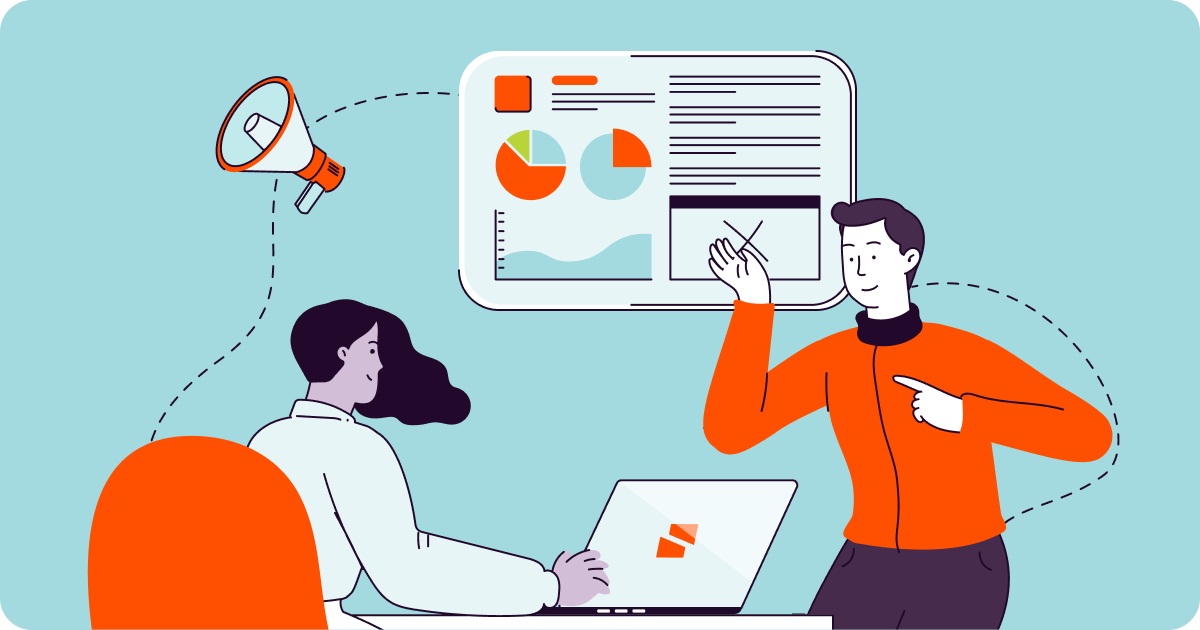Your sales team can only go so far without proper training and enablement. To empower new and seasoned sellers alike to efficiently and consistently close deals, it’s up to revenue leaders like you to provide them with the skills, content, tools, and insights they need to succeed.
That’s why the best sales training programs don’t end after onboarding. As sellers mature and your company evolves, training objectives and methodologies will naturally evolve too — and that’s a good thing. We wrote this post to help teams like yours better prioritize their sales training efforts to improve their performance at all stages of their tenure.
Let’s explore five high-level sales training objectives that great sales managers focus on.
1. Equip your sellers with the right product knowledge and content
New and experienced sellers both need to know the products and services they’re selling inside and out. Over time, these offerings will fluctuate, so the best sales training should only ever focus on the most up-to-date features and benefits of their products and services.
When it comes to training sales teams, there are many different sales training methods and tools that make communicating this information easier. At first, it may take some trial and error to determine which training approach works best for your organization, but one of the most important things to keep in mind is this: You need to meet sales reps where they’re at and avoid overwhelming them with too much information upfront.
Some of the most popular sales training methods include online sales training courses, sales training videos, and individual coaching. Combining technology and hands-on training usually produces the best results. (More on that in objective #5!)
2. Refine their soft skills with coaching
Sellers are relationship builders. Developing their soft skills is essential if you want to see ongoing sales success. Though product knowledge and technical skills are vital, soft skills are really what make or break deals. To see consistent sales success, train your team to:
- Actively listen
- Ask probing questions
- Manage their time excellently
- Empathize with customers
- Adapt and be patient — no two deals are the same
The most effective way to refine your team’s soft skills is with learning and coaching, which is significantly easier with a tool like Seismic Learning. With Seismic, sales leaders can offer their teams a safe space for learning, coaching, and skill development. This video shares more about how sellers can hone their skills and receive constructive feedback to strengthen their areas of opportunity all in one place.
3. Help everyone understand and master the sales process
Every company has its unique way of doing things, and sales training plays a significant role in getting everyone on the same page, from the very first interaction with a prospect to a successful handoff to their customer success counterparts.
Make it an objective to give everyone a unified understanding of the products and services you offer. It’s been proven that organizations that invest in employee training and development see 11% greater profitability year-over-year than those that don’t, so prioritize this alignment because it pays off.
Not only will this improve your internal harmony, but it’ll also enhance the overall customer experience. From the first touchpoint to post-sale support, make sure all of your team members work together seamlessly and create an environment where success is a collaborative effort.
4. Double-down on end-of-deal interactions
When a deal is reaching the finish line, there’s a surge of pressure on sellers to convert potential wins into revenue. In B2B sales training, it’s important to equip your reps with the skills to navigate these important situations effectively.
During sales training, focus on teaching reps how to handle common objections that may arise, navigate negotiations, and ultimately bring about the successful closing of the deal. If you need a few sales training ideas, consider providing practical strategies and simulated scenarios in sales training to help prepare reps for these critical moments. This will help them more confidently address challenges and turn prospects into customers.
5. Invest in technology and train sellers to use each tool
There’s no one-size-fits-all tech stack on the market. Regardless of what tools you select to roll out your training initiatives, prioritize these two things:
- The simplicity and decluttering of a seller’s tech stack
- Accessible training for anyone in the sales process — think SDRs, AEs, Sales Engineers, and their managers — around how to use the tools at their disposal
Every tool must serve a purpose and bring value to the table, which is why we can’t overstate the importance of training your team with a tool like Seismic enough; it brings together training, coaching, content, analytics, and more.
To share a bit more about Seismic…
The Seismic Enablement Cloud™ is a sales enablement platform that’s helping more than two million sellers from 2,200+ companies gain the confidence and readiness they need to win deals.
Case in point, The Seismic 2023 Value of Enablement report revealed that 79% of respondents agree that enablement technology gives them quick access to content, information, and/or coaching, which lets them speak to clients from a more informed standpoint. What’s more is that 76% of respondents also said that quick access to coaching and training content keeps them from second-guessing themselves with customers.
The bottom line is this: Sales enablement training that’s delivered via technology gives sellers the training and confidence they need to build relationships, right in their moment of need. To see how tangibly sales training impacts the bottom line, we suggest you read this guide next: The Business Impact of Sales Training and Enablement.
